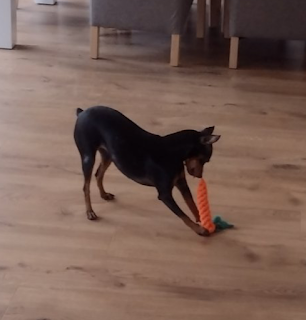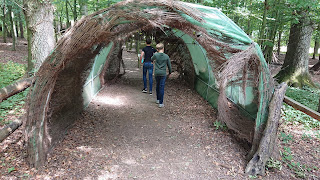We have been in our house for nearly 4 years now. There are plenty of trees in and around our garden, which help attract birds and provide nesting opportunities. The top of our house has been converted into two bedrooms and a bathroom, but one side still has a fairly sizeable space under the eaves. This is also the location of a very large tank that provides bathrooms on the first floor with water.
Reeling from the enormous increase in our water bill - due to being switched onto a water meter - I was in the eaves with a plumber friend of mine checking a float valve that seemed very slow to shut off, when he suddenly remarked that a little dark bird had been disturbed - subsequently jumping off its nest and revealing three pure white eggs.
I am well aware that nesting birds need to be left to their own devices, as per the Wildlife and Countryside Act 1981, and I am always thrilled if birds decide to nest in my garden, let alone my house! I took a quick snap of the nest and posted it on the UK Springwatch FB group. Well, none other than Jack Baddams - one of that TV programme's presenters - responded to confirm that it was 100% a swift nest, and that they are now officially classified as endangered. He was very jealous that a pair had decided to nest in our loft.
Some facts about swifts: they are the fastest bird in direct flight, clocking 70mph. This helps them to complete the enormous annual migration from Africa to the UK in about 4 weeks. Swifts only visit the UK to breed, and this is also the only time each year when they spend any time not airborne. That is right - swifts spend most of their lives in the air, where they sleep (it is suspected they can shut down one half of their brain alternately), eat and copulate. Swifts are monogamous, and when the right partner is finally identified they will stick together like glue. They are also nest site faithful, always returning to the exact same nest every year. This last fact is wonderful to note, because it means we could see this pair annually for years to come. It will also generate a bit of angst, however, wondering if they are ok in between trips to the UK.
I busied myself ordering an additional security camera, so we could check if the birds had returned to the nest, and also to monitor the chicks’ progress once they had hatched. I quietly crept along the boards, stationed the camera and retreated to view the night vision footage. Thankfully, there was a bird sat on the eggs (the male and female take turns incubating for about an hour each time), so that was a big relief. Contrary to what many people may tell you, it takes a fair amount of aggravation to drive a bird away from its nest - especially if eggs or young are present. Site faithful species like swifts are particularly unwilling to abandon a nest, and it seemed they were not worried by our intrusion. Our youngest son is in the bedroom next to their nest, and he is normally engaged in a combination of VR games coupled with loud music. None of this has bothered the swifts.
At night the pair are always snuggled up in the nest together (although room is a bit tight and it is the equivalent of two people trying to get comfortable in a single bed). They also don't exit the nest if weather is poor, because insect numbers will drop significantly and it is not worth expending the energy.
So, fingers crossed for our new feathered family members and a final mention for my lovely wife, Fern, to thank you for being my swift xxx








































